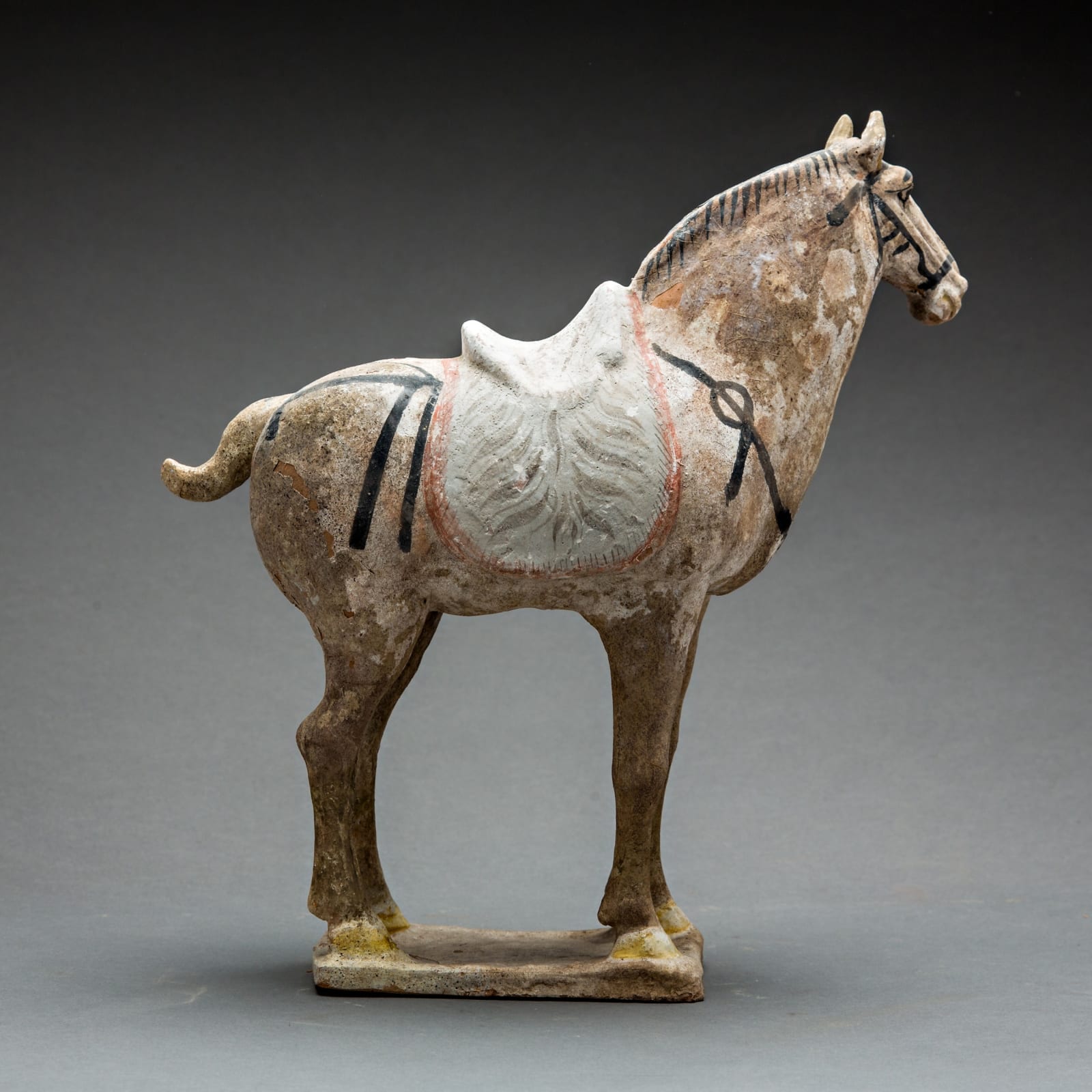Tang Sculpture of a Horse, AD 618 - AD 906
Terracotta, Pigment
30.5 x 27.9 x 7.6 cm
12 x 11 x 3 in
12 x 11 x 3 in
LSO.501
Further images
During the Tang dynasty, China enjoyed a period of consolidation, achievement, and confidence. T'ang art tends to reflect this assurance in its realism, energy, and dignity. Pottery of this era...
During the Tang dynasty, China enjoyed a period of consolidation, achievement, and confidence. T'ang art tends to reflect this assurance in its realism, energy, and dignity. Pottery of this era is often compared to that of Classical Greece for the sophisticated achievements in sculpting and modeling. This statue resembles a portrait of an individual horse with its lifelike modeling and expressive facial features. To add to the realistic effect, a mane made of real hair would have been attached to the statue at the groove along the horse's neck and a tail added to the rear. Strong, noble, and splendid, this brightly painted terracotta horse conveys the love and admiration that Tang society felt toward its steeds. As horses were often symbols of the afterlife, this funerary statue seems to be ready to bear his owner into the afterlife on his bright orange saddle. Horses held particular significance with Tang rulers and aristocrats, who relied on them for military preparedness and diplomatic policy. In addition, they were also revered for their religious significance: ancient tradition linked them to the dragon, designating them as supernatural creatures. Clearly, this horse was a beloved creature buried alongside the deceased to accompany him throughout eternity. Wearing harnesses painted in black with orange highlights, the horse is ready to gallop across the eternal fields of the afterlife, carrying the spirit of the deceased upon its back.





